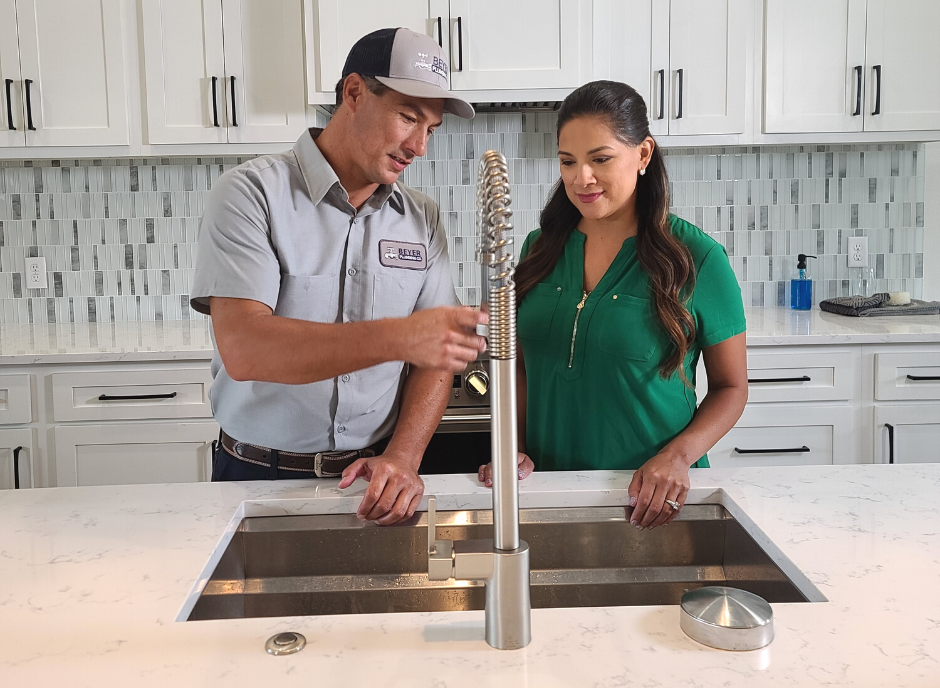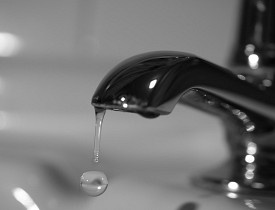Exploring the Significance of Dealing with a Dripping Faucet
Exploring the Significance of Dealing with a Dripping Faucet
Blog Article
Just about everyone seems to have his or her own idea about Why Is It Important To Fix Your Leaking Tap/Faucet?.

Dripping taps may feel like a small aggravation, but their influence surpasses simply the inconvenience of the audio. From wasting water to incurring unnecessary economic expenses and health and wellness risks, neglecting a leaking tap can lead to various repercussions. In this short article, we'll explore why it's critical to address this typical house concern immediately and efficiently.
Waste of Water
Environmental Effect
Leaking faucets contribute considerably to water waste. According to the Environmental Protection Agency (EPA), a solitary faucet dripping at one drip per secondly can squander greater than 3,000 gallons of water each year. This not just stress water resources but also influences ecological communities and wild animals dependent on them.
Step-by-Step Guide to Dealing With a Dripping Faucet
Tools Required
Before attempting to fix a trickling tap, collect the necessary devices, consisting of an adjustable wrench, screwdrivers, substitute components (such as washing machines or cartridges), and plumber's tape.
Typical Tap Issues and Their Solutions
Determine the kind of faucet and the specific issue causing the drip. Typical troubles consist of damaged washers, corroded shutoff seats, or malfunctioning O-rings. Describe producer directions or on-line tutorials for detailed support on repair work.
Financial Expenses
Boosted Water Expenses
Beyond the ecological impact, dripping taps can pump up water bills significantly. The gathered waste gradually equates into greater energy expenditures, which could have been stayed clear of with prompt repair work.
Potential Property Damages
Additionally, long term leaking can bring about damage to components and surface areas bordering the faucet. Water buildup can trigger staining, rust, and also architectural issues if left neglected, leading to added repair work expenses.
Wellness Issues
Mold And Mildew and Mold Growth
The consistent presence of wetness from a dripping faucet produces an ideal atmosphere for mold and mildew and mold development. These fungis not just compromise indoor air quality but also pose health risks, particularly for people with respiratory system conditions or allergies.
Waterborne Conditions
Stagnant water in dripping taps can end up being a breeding ground for microorganisms and other pathogens, raising the risk of waterborne diseases. Impurities such as Legionella microorganisms prosper in stagnant water, potentially causing major ailments when ingested or breathed in.
Do it yourself vs. Professional Fixing
Benefits and drawbacks of DIY Repair Service
While some might try to repair a trickling faucet themselves, DIY repair work include their very own set of challenges. Without appropriate understanding and devices, do it yourself efforts can aggravate the problem or bring about insufficient repairs, lengthening the trouble.
Advantages of Employing an Expert Plumber
Employing a professional plumber guarantees that the underlying reason for the leaking tap is attended to efficiently. Plumbing technicians possess the proficiency and tools to detect and repair tap issues successfully, conserving time and reducing the danger of more damage.
Environmental Obligation
Individual Payment to Conservation
Taking obligation for repairing dripping taps lines up with wider initiatives towards water conservation and ecological sustainability. Every individual's actions collectively make a significant influence on protecting valuable resources.
Sustainable Living Practices
By focusing on punctual repair services and taking on water-saving routines, individuals add to lasting living practices that benefit both present and future generations.
Preventive Measures
Routine Maintenance Tips
To avoid trickling faucets, perform routine maintenance such as cleaning up aerators, checking for leakages, and replacing damaged components immediately. Furthermore, think about mounting water-saving devices or upgrading to more efficient components.
Importance of Prompt Repair Works
Attending to trickling faucets as quickly as they're discovered protects against more water waste and prospective damage, eventually saving both water and cash in the future.
Influence On Property Value
Assumption of Well-Maintained Residential Or Commercial Property
Preserving a residential property in good condition, consisting of dealing with upkeep concerns like dripping taps, boosts its perceived value and charm amongst possible buyers or tenants.
Influence on Resale Value
Properties with well-kept plumbing components, including faucets, command greater resale worths in the real estate market. Attending to dripping taps can add to a positive impression throughout home assessments and arrangements.
Final thought
Resolving a trickling faucet exceeds simple benefit; it's a necessary action towards preserving water, minimizing financial prices, and protecting health and residential property. Whether with DIY repair services or professional aid, acting to repair leaking faucets is a small yet impactful way to promote liable stewardship of resources and add to a healthier, more lasting future.
How to Fix a Leaky Faucet: Step-by-Step Repair Guide
A leaky faucet may seem like a simple annoyance, but if it's not fixed promptly, that leak could cost hundreds to potentially thousands. From water damage to mold, mildew, and high water bills, even a tiny leak can be catastrophic if left unattended. Damage like this can even affect the overall value of your home, so it's important to take the right approach for leaky faucet repair. You may need the help of a plumber in some cases, but we've got a few tips you can try on how to fix a leaky faucet before calling the pros.
Four Faucet Types
When you're learning how to fix a leaky faucet, the first step is knowing what kind of faucet you're working with! There are four common types.
Cartridge Faucets
Cartridge faucets come in one- or two-handled varieties. In one-handled cartridge faucets, hot and cold water combines in a single cartridge. In the two-handled versions, hot and cold water are controlled separately and mixed in the faucet.
Ball Faucets
Ball faucets have a single lever you push up and down to adjust the pressure and rotate to change the temperature. A slotted metal ball controls the amount of water allowed into the spout.
Compression Washer Faucets
They're the oldest type of faucet, but they're still used in many homes — especially older ones. Compression faucets have two separate handles that, when turned, raise or lower the washer that seals a water valve. This valve stops water from flowing through the faucet when it is turned off.
Disc Faucets
Disc faucets rarely need to be repaired due to their maintenance-free design. The water flow is controlled by two discs — the upper one raises and lowers against a fixed lower disc, creating a watertight seal. If your disc faucet starts leaking, you may need to replace the seals or clean residue buildup from the inlets.
Fixing a Leaky Faucet
Step 1: Turn Off the Water
Whether you're learning how to fix a leaky bathtub faucet or how to fix a leaky kitchen faucet, always turn off the water supply to your working area when you're fixing a leak. The last thing you want is a flood added to your list of things to fix.
Look for the shutoff valves below your sink or around the tub and turn them clockwise to stop the water flow. If your faucet doesn't have shutoff valves, you may need to turn off the water for the whole house. Check to make sure it's off by turning the faucet on. If nothing comes out, you're ready to start the repair.
Step 2: Take Apart the Faucet
How you disassemble your faucet depends on the type of fixture you have. You can use a flathead screwdriver to remove the caps on top of the handle or handles for cartridge and compression faucets. Inside, you should see handle screws. Unscrew these with a screwdriver to remove the handle.
Disc- and ball-style faucets will typically have an inlet screw near the handle, and removing that will reveal the interior of the faucet.
Detach the Valve Stem
For cartridge- and compression-style faucets, you'll see the inner valve stem or cartridge once you remove the faucet handles. If you have a compression faucet, unscrew the brass valve stem. If you have a cartridge faucet, pull out the cartridge. If your cartridge has been in place for a while, it may require some tools or extra force to remove it due to mineral deposits.
Examine and Replace Parts
Once you've removed the parts, check them out to confirm what needs to be replaced. You may see corroded rubber washers, O-rings, stems, or cartridges. On a ball-style faucet, check the seats and springs for damage.
If you need to repair a leaky disc faucet, check the inlet and seals on the lower disc.
Once you determine what parts must be replaced, visit your local hardware store. Bring the damaged parts with you to ensure you can purchase the correct components to replace them.
Clean Valves and Faucet Cavity
If you've removed a stem or cartridge, you may notice mineral buildup in the faucet's threads. Use white vinegar to clean the valve seat by soaking it for a few minutes, then scrub it away with a soft toothbrush and rinse with warm water. You can also clean the interior of the faucet in the same way.
Reassemble the Faucet
Once your faucet is cleaned and the required parts have been replaced, it's time to reassemble it. Put the pieces back together and slowly turn the water supply back on. Doing this slowly is crucial because too much initial water pressure can damage the new hardware you've just installed.
https://homewarranty.firstam.com/blog/how-to-fix-leaky-faucet

I stumbled upon that piece on Why It's Important to Fix Leaky Faucets while doing a search on the search engines. Do you know about somebody else who is in the market for the subject? Please feel free to promote it. I enjoy your readership.
Report this page